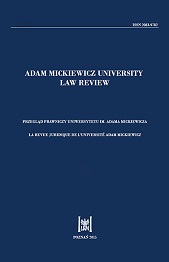Corporate Consistency and the Regulations of the Corporate Governance System
Corporate Consistency and the Regulations of the Corporate Governance System
Author(s): Ryszard Kamiński, Michał FliegerSubject(s): Business Economy / Management, Economic development, Law on Economics, EU-Legislation
Published by: Uniwersytet Adama Mickiewicza
Keywords: corporate consistency; consistency concept; platforms of consistency; consistency model; corporate governance; UE regulations;
Summary/Abstract: Corporate governance involves not only working out the relationship between a company and its shareholders, but also a search for consistency on a daily basis. When consistency is achieved, the shareholders’ satisfaction is higher and relations improve. Consistency is a prerequisite for a company’s effectiveness and efficiency, and it is the board’s task to make a corporation consistent. The first part of the paper introduces M. Flieger’s concept of corporate consistency, where platforms of consistency are introduced and the consistency model is proposed. This is the first time that such an introduction has been made, and this may lead to further discussion and research. The author points out that managers are rarely aware of the consistency problem, and there are no tools which enable a consistent system to be worked out. This makes the concept of corporate consistency worth investigating. In the second part of the paper, R. Kaminski focuses on the development of the European Union and Polish regulations, which were introduced as a consequence of the changing conditions in company activity. This section determines the content and sequence of the main issues discussed in the article. These include: the characteristics of the concept of a corporate governance system, the presentation of changes in regulations regarding a corporate governance system in the EU and the presentation of Polish regulations on corporate governance. The primary sources used in the work were literature and the rules and standards (mandatory and optional) on corporate governance. Both authors used descriptive analysis and the comparative method.
Journal: Przegląd Prawniczy Uniwersytetu im. Adama Mickiewicza
- Issue Year: 2017
- Issue No: 7
- Page Range: 213-234
- Page Count: 22
- Language: English

